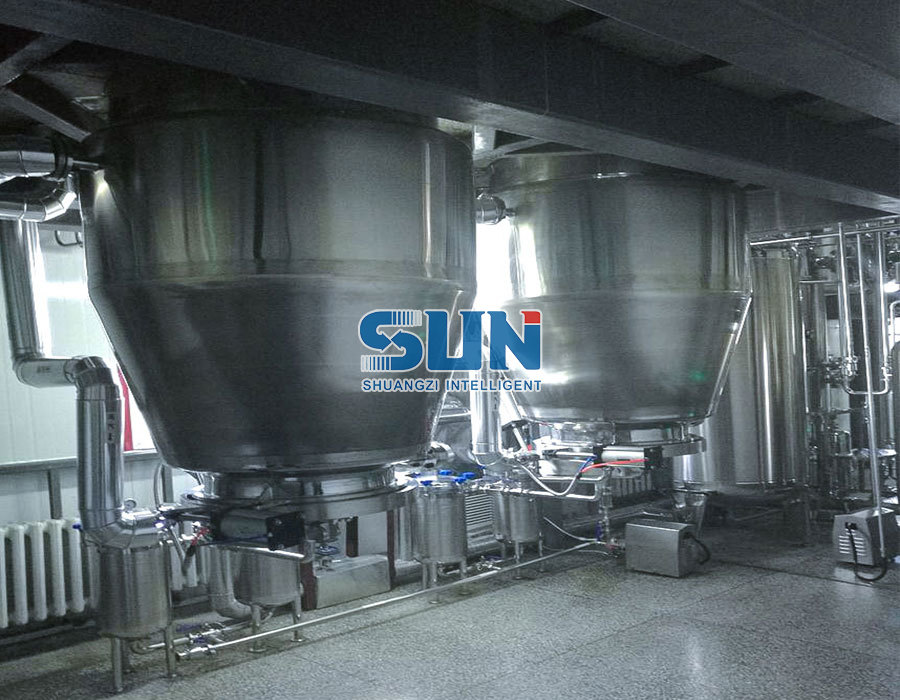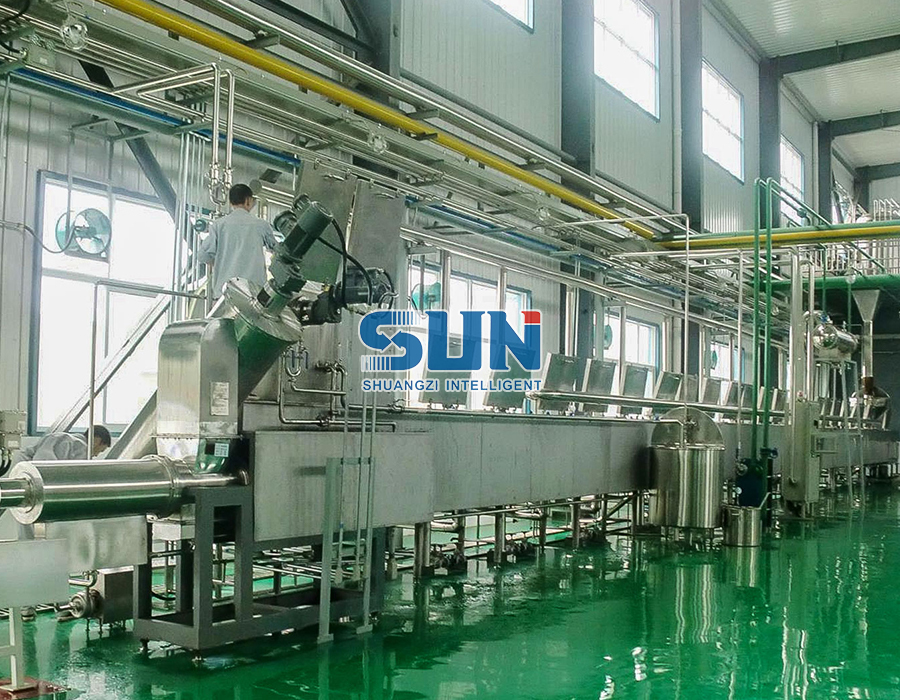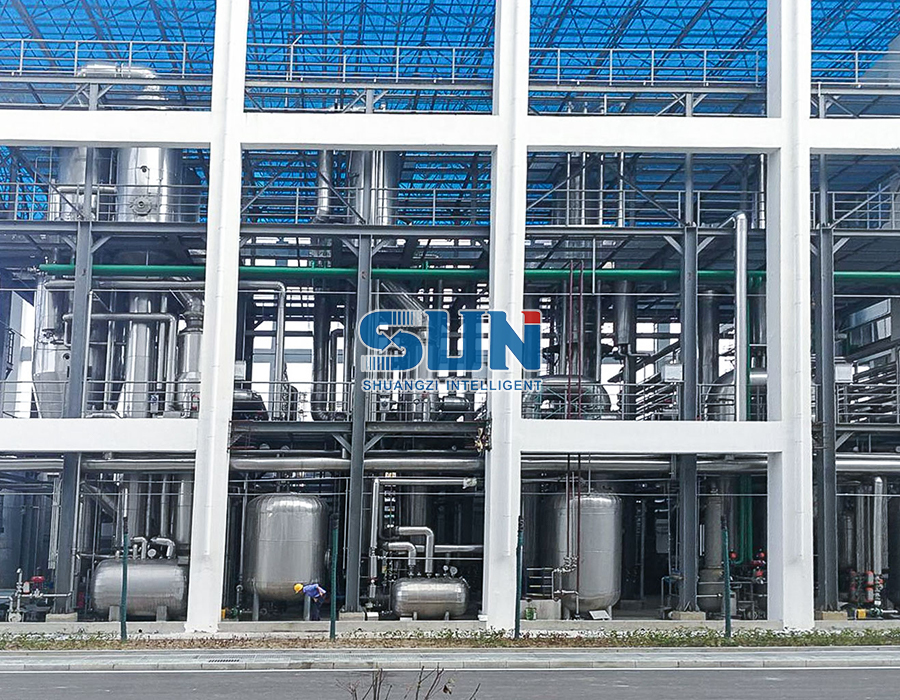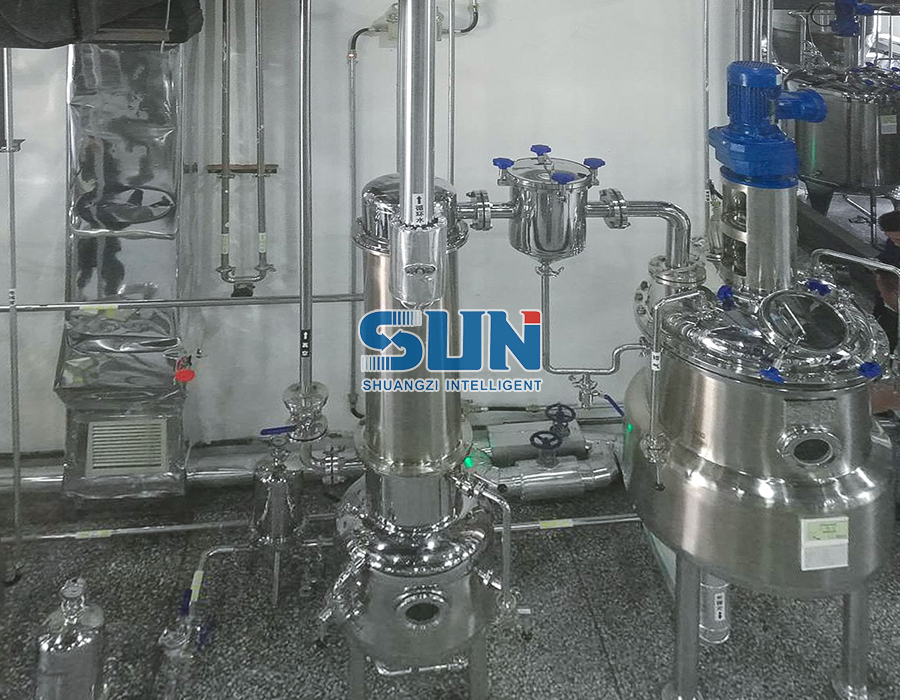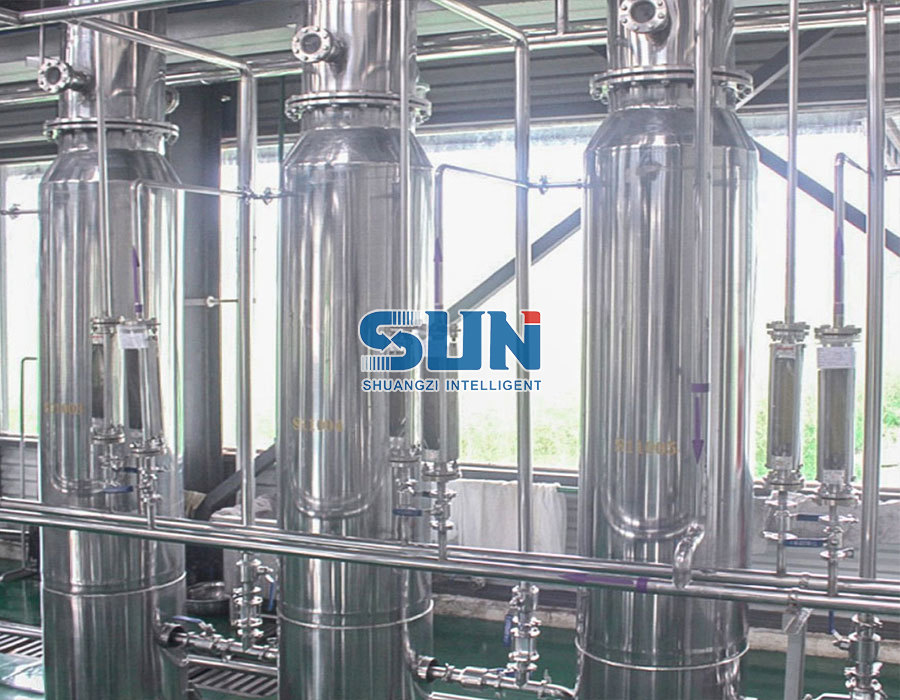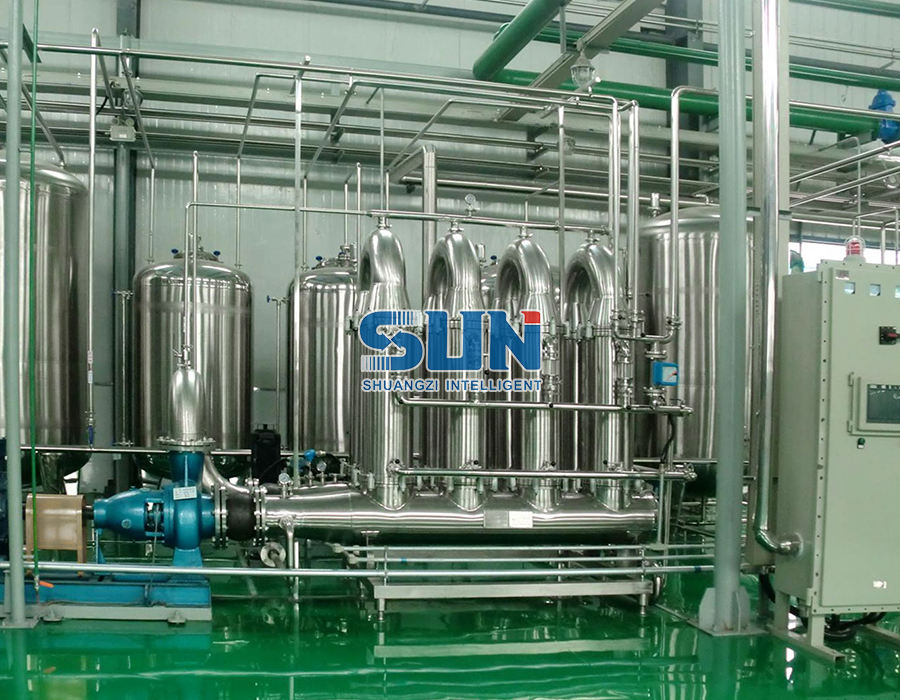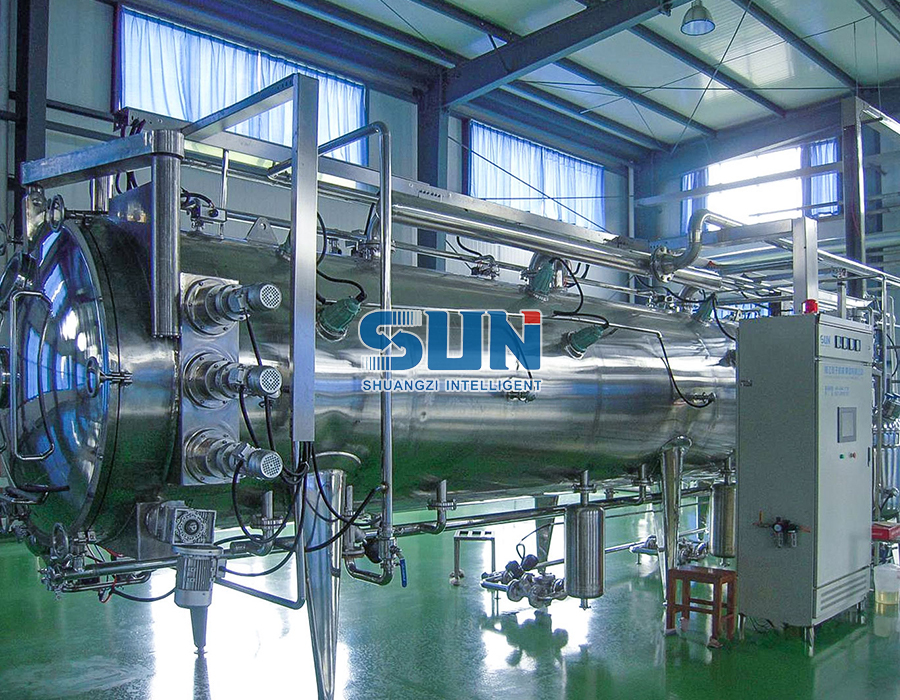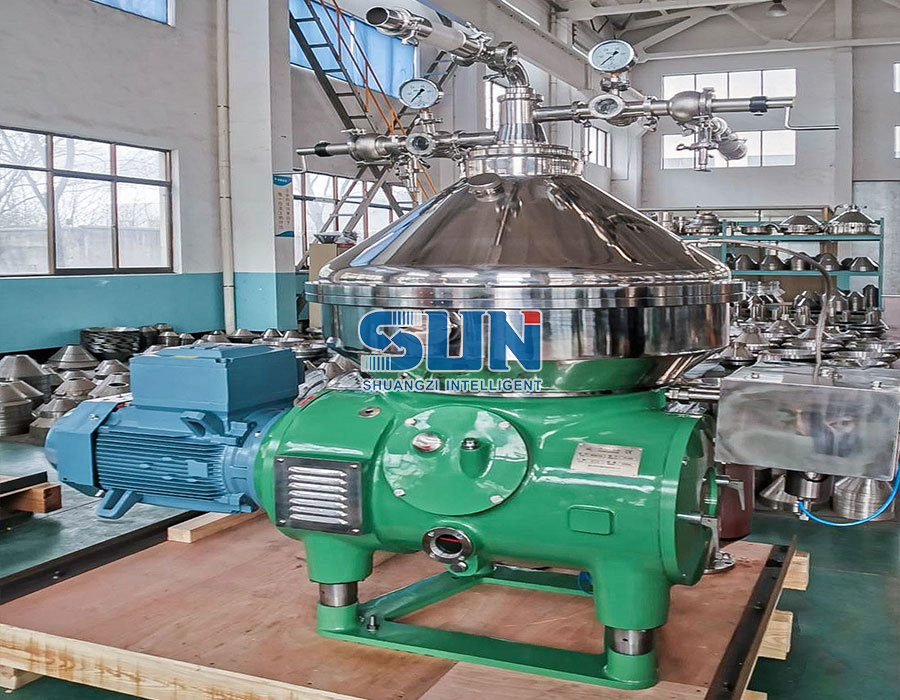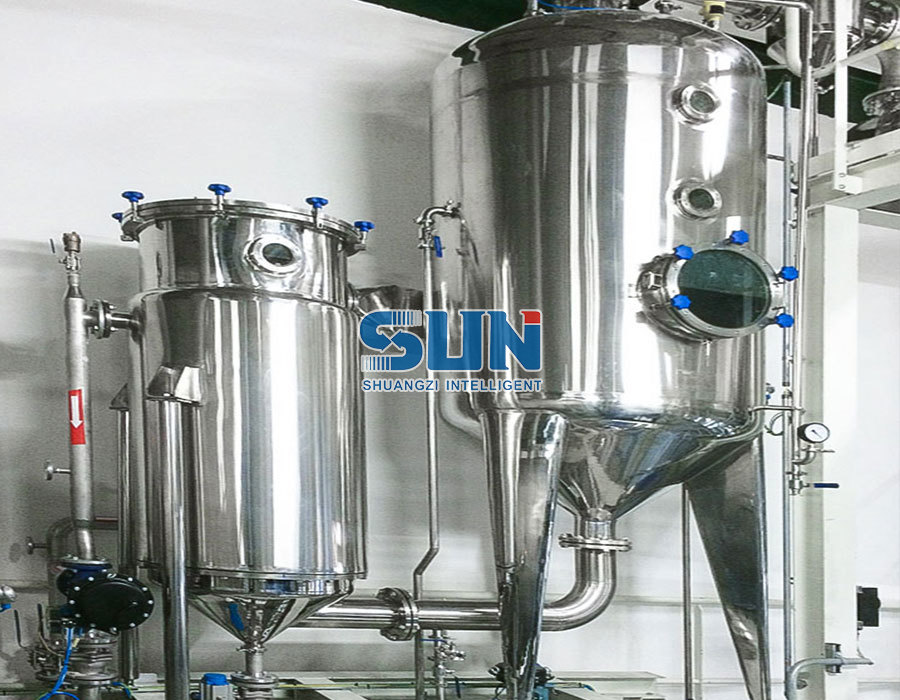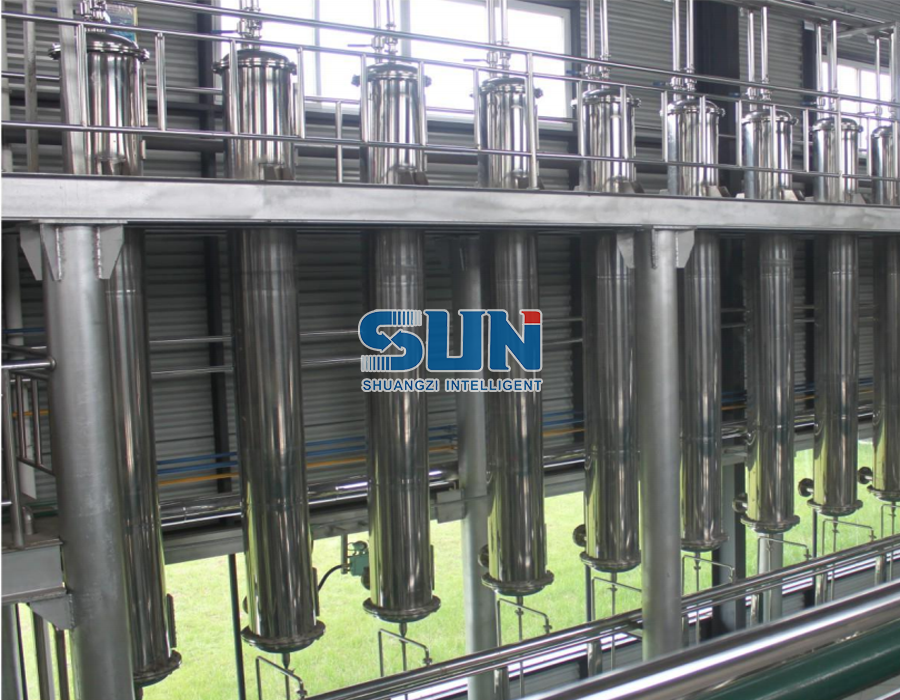A fall film evaporator effectively separates vapor and liquid through a combination of design features and operating principles. Here's how the process works:
Thin Liquid Film Formation: The falling film evaporator is designed with vertical tubes or plates that are heated. The liquid to be evaporated is evenly distributed at the top of these tubes or plates. Gravity causes the liquid to flow down the inside surfaces, forming a thin and uniform film.
Heating the Liquid Film: As the liquid film flows downward, it comes into contact with the heated surfaces. The heat applied to these surfaces causes the liquid film to absorb thermal energy, raising its temperature and causing it to reach or exceed its boiling point.
Rapid Vaporization: Due to the efficient heat transfer and the thinness of the liquid film, vaporization occurs rapidly. The liquid in the film changes from a liquid state to a vapor state, creating vapor bubbles within the film.
Vapor-Liquid Separation: The vapor bubbles generated within the liquid film are less dense than the liquid. As a result, they quickly rise within the liquid film, moving upward along the inside surfaces of the tubes or plates.
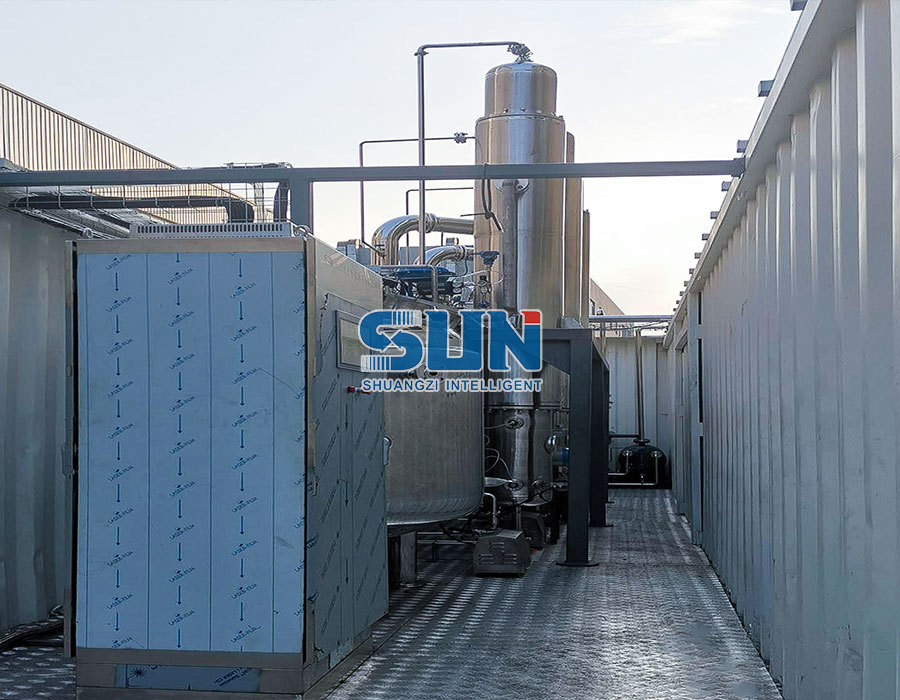

Clear Separation Zone: The upward movement of vapor bubbles creates a clear separation zone between the vapor phase and the liquid film. The vapor phase rises toward the top of the evaporator while the liquid film continues to flow downward.
Efficient Vapor Removal: The design of the falling film evaporator ensures that the vapor phase can be efficiently removed from the system. Typically, there is a vapor space at the top of the evaporator where the vapor collects before being directed to a vapor outlet.
Maintaining Thinness of the Film: To ensure continued effective separation, it's important to maintain the thinness of the liquid film. This is achieved through proper control of the liquid flow rate, ensuring that only a thin layer of liquid covers the heating surfaces.
Counter-Current Flow: In many falling film evaporators, the heating medium (such as steam) flows in a counter-current direction to the liquid film. This counter-current flow enhances the efficiency of heat transfer and vapor-liquid separation.
Uniform Temperature Profile: The uniform heating of the liquid film helps maintain a consistent temperature profile along the length of the evaporator. This uniformity contributes to clear vapor-liquid separation.
Preventing Re-Condensation: The efficient separation of vapor and liquid minimizes the risk of vapor re-condensing into the liquid phase. This ensures that the vapor is effectively removed from the evaporator without returning to the liquid film.
A falling film evaporator effectively separates vapor and liquid by creating a thin, uniform liquid film that rapidly vaporizes due to efficient heat transfer. The upward movement of vapor bubbles within the film creates a clear separation zone between the vapor and liquid phases. This separation allows for the efficient removal of vapor from the evaporator while the liquid film continues to flow downward, resulting in the concentration or separation of the desired product.


 英语
英语 俄语
俄语